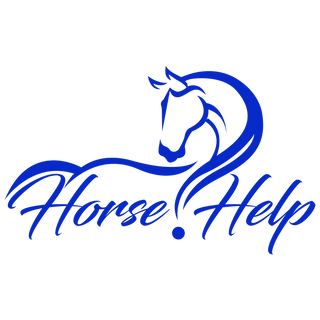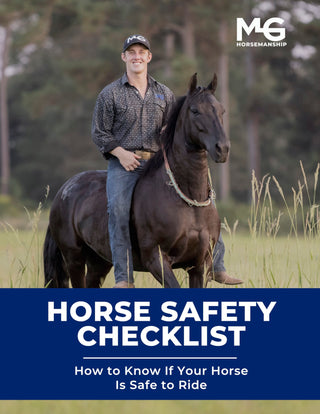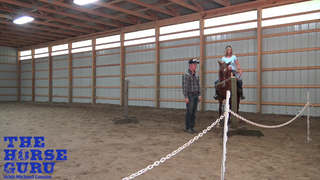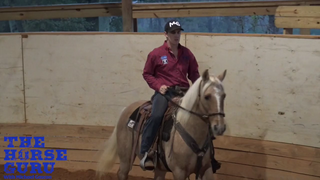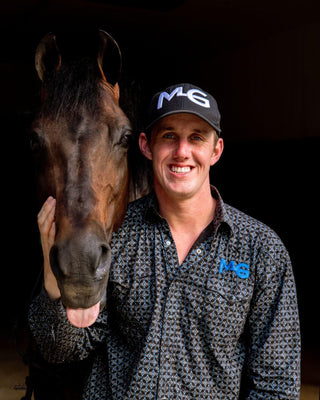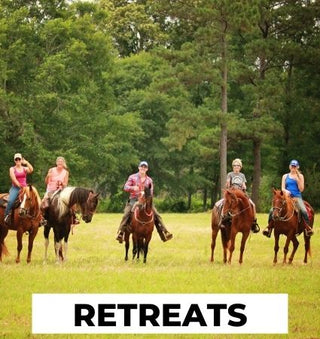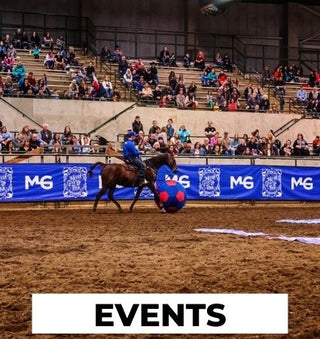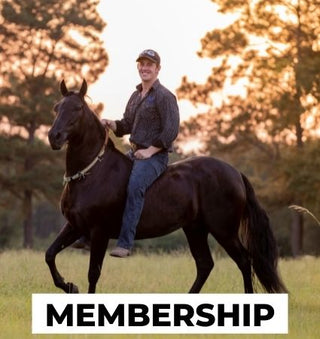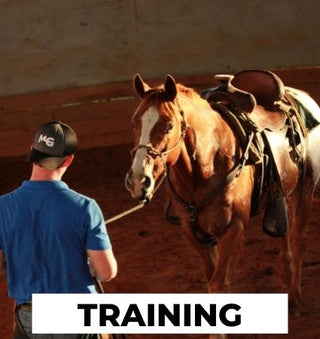Watch the Video Here or continue reading below!
In the world of gaited horses, pace can be a persistent challenge. On Day 2 of the clinic with Michael Gascon and Chet, the focus was all about breaking up the pace using the powerful Respect Series. This clinic session tackled not just mechanics but also the mindset behind persistent, respectful communication. Whether you're working with a naturally pacier horse or trying to smooth out a choppy ride, the methods discussed in this clinic can help unlock a more balanced, collected gait.
Understanding the Foundation: Where Flexion Begins
Flex to the Hip – Not Just the Nose
The session began with a review of proper flexion—not just pulling the nose, but understanding that the key point is the hip. Flexion should translate into softness through the entire body. Rather than “conversing” with the reins, riders were encouraged to give a clear, quiet command: pick up the rein and expect an immediate response. This isn’t about fighting the horse—it's about training a consistent, reliable reaction.
"The day you need to grab the rein quick, you don't want resistance—you want a soft give."
Spirals & Pressure: Teaching with Precision
Spiral Exercises to Build Body Control
The spiral was introduced as a foundational tool for softness and bending. Walking in a circle, the rider locks the inside hand and uses the outside rein to touch and release with every backward step. This isn’t random pressure—it’s strategic, teaching the horse to move its feet while giving in the face.
Key Technique
-
Lock one rein near the hip
-
Touch and release the opposite rein as the horse steps back
-
Look straight ahead to guide body balance
“You can only ever ask for one thing at a time. First get the back, then worry about the head.”
The Mental Game: Persistence Beats Resistance
Winning the Mind Before the Body
Michael emphasized that a horse resisting your hand is trying to control the conversation. If they fuss when you touch their face, they’re likely to “take the wheel” when things get exciting. The answer? Persistence.
"If you don't like me touching your face, do what I ask—and I'll stop. But the more you shake, the more I'm going to keep doing it."
This kind of steady, quiet repetition teaches horses that resistance doesn’t work. You aren’t fighting the horse—you’re simply outlasting them with calm clarity.
Gait Correction: Getting Behind the Resistance
From Pace to Gait – Breaking Muscle Memory
The clinic focused heavily on how pacing often stems from tension. A tense horse can’t collect, and without collection, true gait is impossible. Michael demonstrated how to use both reins and legs to soften the horse's head and body simultaneously.
Drill Summary
-
Squeeze with the legs
-
Gently massage the reins left and right
-
Wait for the head to drop
-
Release—then repeat immediately
“If I get 300 more reps than you today, my horse will improve faster—because I’m going back to it again and again.”
The Science Behind the Softness
Head Down = Back Feet Step Forward
One of the most powerful takeaways from this session is what happens mechanically when the horse drops its head. As the head lowers and the back rounds, the hind legs step deeper underneath the body—exactly what you want for a clean, four-beat gait.
“Immediately when he drops his head, that back foot steps farther forward. That’s the change.”
It’s not about forcing a frame—it’s about teaching the horse to release tension so their natural movement can emerge.
Problem Solving Common Mistakes
Avoid “Giving” Equipment
Michael warns against tools like bungees that give when the horse pulls. Instead, the horse should give to the rein—not the other way around. Lock your hand on your leg or hip and let the horse learn: when I pull, I meet pressure. When I give, I get release.
The Respect Series in Action – Under Saddle and Halter
Same System, Different Gear
Whether in a halter or bridle, the Respect Series stays consistent. The same principles apply:
-
Clear flexion to the hip
-
Steady inside rein
-
Pressure and release on the outside
-
Backward steps earn the reward
Even stronger horses benefit when the rein is locked against the leg or hip. The resistance fades when the rider remains steady and persistent.
Final Thoughts: Breaking Pace is About Breaking Patterns
Changing a horse’s way of going—especially when they’re naturally pacier—takes mental strength, physical consistency, and a commitment to smarter riding. Through the Respect Series, Chet began to unlock softness, gain collection, and show glimpses of a smoother, four-beat gait. It’s not just about getting rid of the pace—it’s about building the foundation of responsiveness, respect, and relaxation.
